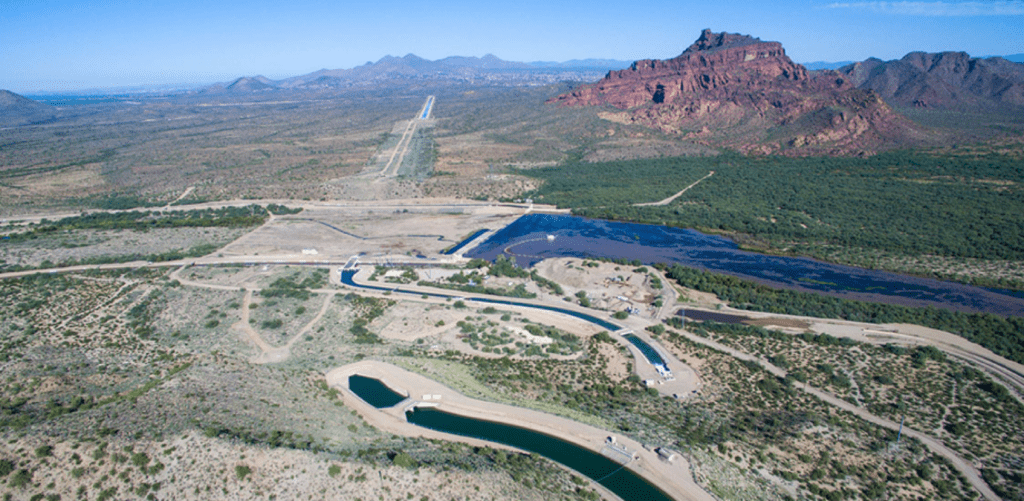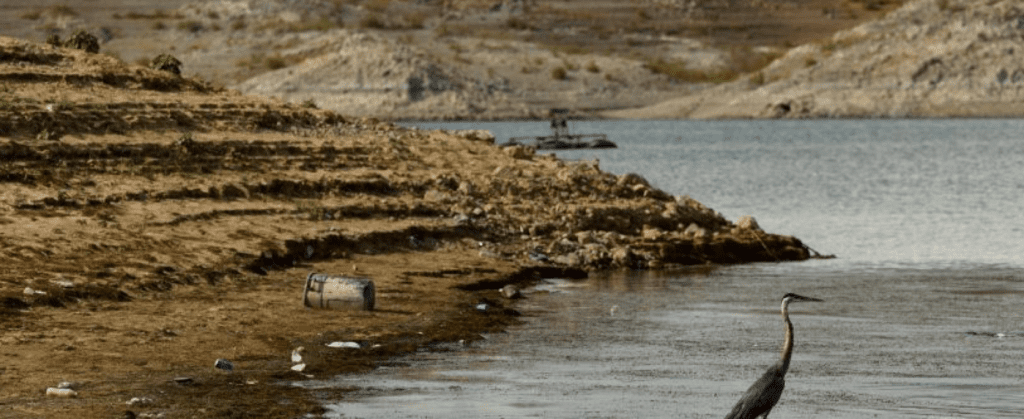Daniel Salzler No. 1114
EnviroInsight.org Five Items September 10, 2021
—————Feel Free To Pass This Along To Others——————
If your watershed is doing something you would like others to know about, or you know of something others
can benefit from, let me know and I will place it in this Information newsletter.
If you want to be removed from the distribution list, please let me know.
Please note that all meetings listed are open.
Enhance your viewing by downloading the pdf file to view photos, etc. The
attached is all about improving life in the watershed. If you want to be removed from
the distribution list, please let me know. Please note that all meetings listed are open.
Enhance your viewing by downloading the attached pdf file to view photos, etc.
The attached is all about improving life in the watershed.
Read this newsletter at EnviroInsight.orgRead this newsletter at EnviroInsight.org
Read this newsletter at EnviroInsight.org
1. 7.5 Million People Die From This Every Year. All we all contribute to this every day of every year if we drive a car/truck/SUV/motorcycle, mow the lawn, and more.
Women exposed to higher levels of air pollution during pregnancy are more likely to give birth to children who develop elevated blood pressure before age 10, according to a new study.
Past studies have linked high blood pressure in both children and adults with direct exposure to air pollution. The new research, published Monday in the American Heart Association journal Hypertension, set out to determine if indirect fetal exposure to air pollution might be associated with higher blood pressure during childhood.
Source: If you have questions or comments about this story, please email [email protected](link opens in new window).
Asthma
Breathing ambient particle (PM2.5) and Ozone (O3) pollution can cause chronic airway swelling and irritation, which is especially dangerous for people with preexisting respiratory conditions. In addition to aggravating asthma symptoms, breathing high levels of air pollution can increase the frequency and severity of asthma attacks.
But air pollution doesn’t only affect people with existing respiratory issues. Studies have shown that ambient air pollution also increases your chances of developing asthma, particularly in young children whose lungs are still developing. In fact, a recent University of Southern California study found that a slight decline in L.A.’s ambient air pollution over the last two decades reduced local childhood asthma rates by 20 percent.
Chronic Obstructive Pulmonary Disease (COPD)
Chronic Obstructive Pulmonary Disease, or COPD, is the overarching term given to a variety of inflammatory lung diseases that cause difficulty breathing and inhibit healthy lung functioning. COPD produces symptoms such as shortness of breath, chest tightness, excess mucus, chronic coughing, fatigue, and more frequent respiratory infections. People with COPD may suffer from a single condition, or they may have multiple respiratory conditions, such as emphysema, bronchitis, and asthma.
Prolonged exposure to air pollution — at home, work, or outdoors — has been shown to contribute to the development of COPD in healthy individuals. It also worsens COPD symptoms for those with existing conditions and increases morbidity and mortality rates associated with the disease. According to the World Health Organization (WHO) air pollution accounts for 43 percent of all global deaths and disease from COPD.

Lung Cancer
When the link between lung cancer and cigarette smoking became clear in the late 90’s and early 2000’s, smoking in restaurants, bars, and workplaces was soon outlawed by almost every U.S. state. Due to the fact that smoking is so publicly associated with lung cancer, it’s easy to assume that if you don’t smoke, you’re not at risk. In truth, worldwide air pollution accounts for 29 percent of all deaths and disease from lung cancer.
When the 2018 Northern California wildfires caused an air pollution crisis in San Francisco last year, UC Berkeley researchers helped drive home the seriousness of the situation by translating local Air Quality Index (AQI) readings into an equivalent number of cigarettes. During the height of the crisis, they estimated that breathing San Francisco air was the health equivalent of smoking 12 cigarettes a day.
If you assume that a PM2.5 level of 22μg/m3 is the equivalent of smoking one cigarette per day (as UC Berkeley researchers estimated), that means that staying indoors was the health equivalent of smoking 3.6 cigarettes — a substantial improvement from being outside, but far from a “healthy” alternative. As wildfires become more common, more people are taking steps to protect their health and keep their indoor air healthy during pollution alerts.
Increased Vulnerability to Infection
Because PM2.5 air pollution is so small, it has the potential to travel deep into our lungs and enter into our bloodstream. When PM2.5 levels are elevated, even for a short period, they increase our likelihood of developing a respiratory infection.
A 2019 study revealed that increased PM2.5 concentrations in New York State were associated with an increase in the number of culture-negative influenza and pneumonia infections reported the following week. These infections persisted even as PM2.5 levels started to improve.
Reduced Life Expectancy
The fatal effects of breathing PM2.5 have been studied for a number of years. In 2008, researchers attributed 1.3 million deaths globally to the combined effects of indoor and outdoor air pollution. By 2016, that number had risen to seven million.
Last year, however, was the first time that air pollution was studied in relation to global lifespans — and the results were sobering. Despite drastic differences in air quality by region, the study found that air pollution had reduced global life expectancy rates by over a year. Source: https://blog.getawair.com/5-serious-health-risks-associated-with-air-pollution.
2. Chino Winds and Triangle NRCD Bi-Monthly Meeting Invite / Agenda. September 14, 2021 University of AZ Extension Office at 840 Rodeo Dr., Prescott, A at 9:00 a.m. The agenda looks something like this:
Triangle/Chino Winds District Meeting AGENDA
Call to order
Minutes of the previous meeting
Treasurers Report
NRCS report
AZ State Land Report
New Business
Call to the public

Adjourn For more information, contact Wendy Chavey | 8841 E. Florentine Rd, STE C, Prescott Valley, AZ 86314 or WYCEAZ.COM
3. Remembering For The Past 20 Years. September 11, 2001 If you were a part of any community in the United States or any other part of the world, you remember where you were. What you were doing, and what was happening in New York City, at the Pentagon and in a wooded area of Pennsylvania.
Many things have changed over the past 20 years as has the attitudes of many. Many died that day and since then many more have given their lives in war.
We who observed the incident, who respect the lives lost, and those individuals injured deserve our respect, prayers and gratitude.
4. Post-Conference MAR 5 Field Trip Coming this Fall. On Friday, October 22, from 10:00 AM to 12:00 PM, the Gila River Indian Community (GRIC) will host a field trip to the MAR 5 Managed Aquifer Recharge site. This limited-sized event will only be open to WRRC 2021 conference attendees. Please note that participants will need to provide their own transportation. The WRRC will provide more details to conference attendees following the conference.
Managed Aquifer Recharge (MAR) is an integral component of the Community’s goals for water management. By developing MAR sites on-reservation, the Community is able to store water underground for use during times of surface water shortages, ensuring a safe yield of its groundwater supplies for agricultural purposes. At the same time, these MAR facilities fulfill a broader Community goal of restoring a flowing river and enjoying the riparian and cultural enhancements they provide.

The MAR 5 site has been a tremendous success and has generated a great deal of interest nationally and locally, earning four distinct awards, including the Arizona State University Metis Award, the Arizona Parks and Recreation’s Natural Resources Park of the Year, and two Arizona Forward awards, including the President’s Award (for commitment to education) and the prestigious Crescordia Award (for preserving the natural landscape, traditional practices, and history of the Community).
On October 22, between 10:00 AM and 12:00 PM, the following storytellers will be available for the tour:
Yolanda Elias, Akimel O’otham cultural consultant and artisa
Wil Antone, Akimel O’otham Director of the Department of Environmental Quality
Henrietta Lopez, Akimel O’otham language and culture fonsultant
Source; https://wrrc.arizona.edu/events/special-event/post-conference-mar-5-field-trip-coming-fall
5 . Water Shortages Run Risk of Dividing States Using Colorado River. Diminishing water supplies in the Colorado River Basin have led the basin’s seven states to adopt a “we’re all in this together” approach as they deal with climate change, intense drought, and increasing growth.
But water officials wonder whether states will now act in their own self-interest, worsening tensions and sparking conflicts between the lower and upper basin. Fueling those concerns are the water reductions announced Aug. 16 by the Bureau of Reclamation, and the likelihood of deeper cuts in the near future for a basin that supplies water to about 40 million people.
“There’s always been a little ruffling of feathers” between the lower states of Arizona, California, and Nevada and the upper states of Colorado, New Mexico, Utah, and Wyoming, said Andy Mueller, general manager of the Colorado River District in Glenwood Springs, Colo. “And that could get more severe as we move forward in the drought.”
Outside of the West, interstate legal battles already are brewing over groundwater. Scholars say water cases will pile up at the U.S. Supreme Court—which ruled for Georgia earlier this year in a dispute with Florida—as climate change stresses water resources.

But the cooperation among Colorado River states of the last few years is unlikely to be replaced by court battles, at least for now, predicted Wes Strickland, partner in the Austin and Los Angeles offices of Holland & Knight.
“In terms of going to full battle, litigation means you’re throwing your fate to the court, and most of the time parties in water would rather be the master of their own fate than to give it to the court or the Secretary of Interior to work out,” Strickland said.
The seven states of the basin have cooperated with one another through negotiation under the Law of the River, a series of laws, regulations, treaties, compacts, and legal decisions governing administration and resolution of disputes involving the stressed waterway.
As the West grapples with water shortages, “states are going to protect their own interests and look out for their own citizens, and have different views on allocations and what is responsible development,” said attorney Emily Lewis, co-chair of the natural resources and water law practice group at Clyde Snow & Sessions P.C. in Salt Lake City.
But the states understand the stakes, Lewis said. “Conflict requires a lot of energy, and you could wind up with a situation where nobody wins and everybody loses,” she said.
More ProjectsHistorically, divergent water policies and approaches have marked the relationship between the upper basin — where the most of the water comes from — and the lower basin, where most of it is used.
Critics of the upper basin states point to the more than 25 proposed projects that would divert water out of the river instead of pursuing more aggressive conservation and water efficiency programs.
The upper basin also has been slow to move on one of its priorities from the 2019 Drought Contingency Plans forged by the seven states and later approved by Congress and signed by President Donald Trump.
That priority was development of a “demand management” program to pay users to forgo water they’re entitled, and instead sending it downstream to Lake Powell as a kind of insurance policy to help meet the basin’s compact obligations.
Copyright EnviroInsight.org 2021
